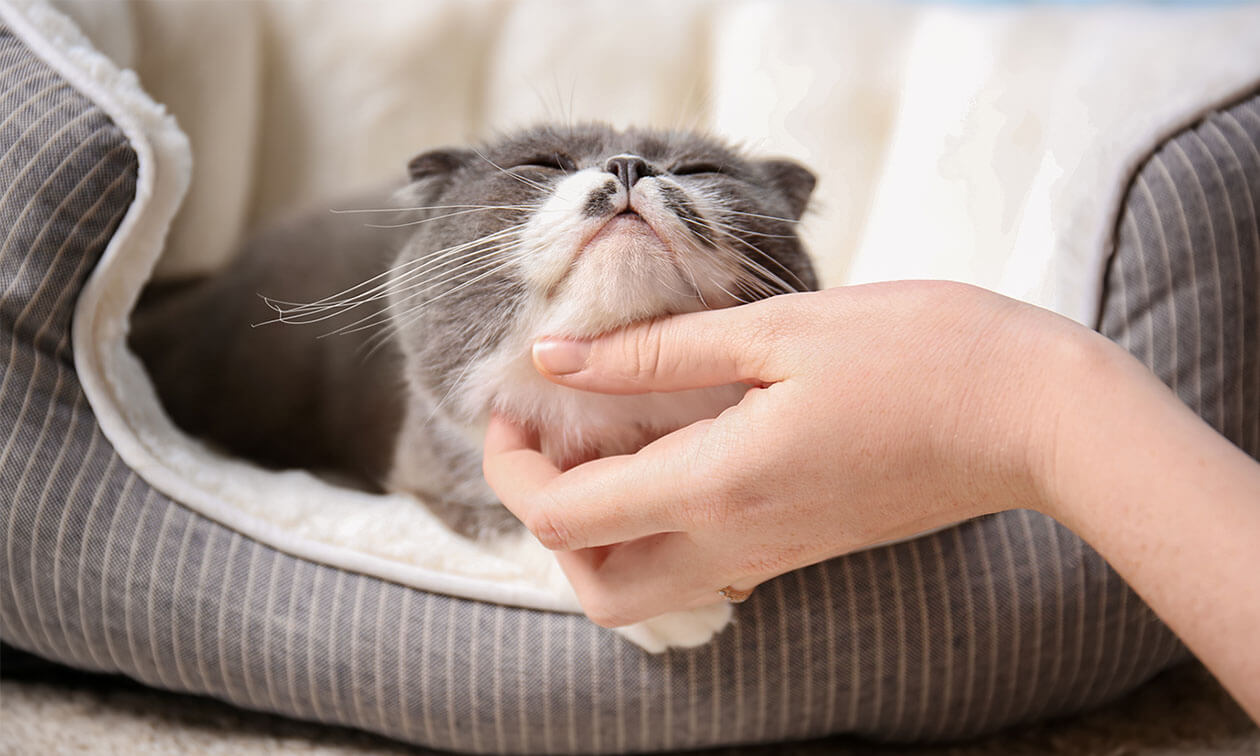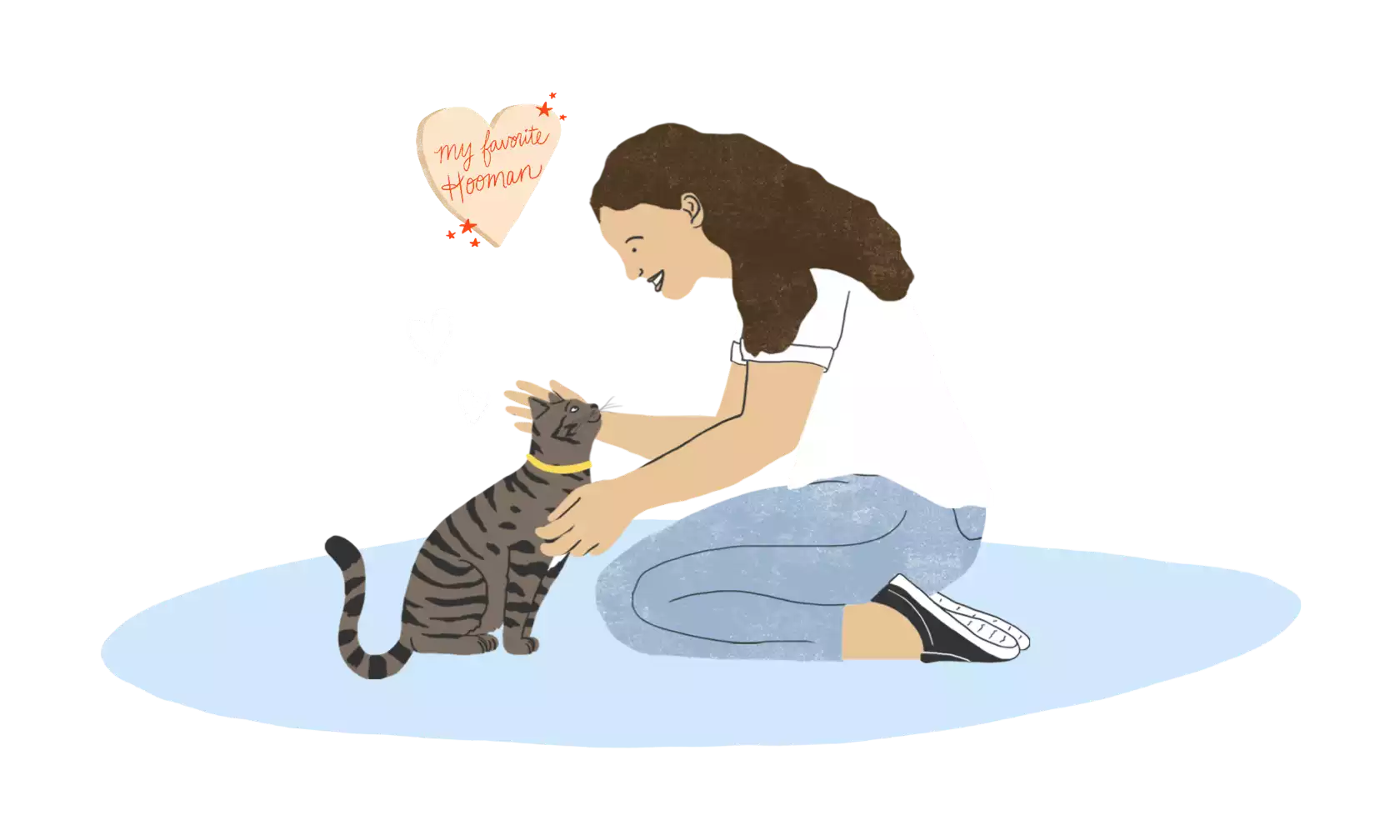Cats have long held a place in human history and imagination — from being worshipped by ancient Egyptians to their association with witches and folklore. Their independent, often mysterious nature has only added to the myths and misconceptions that surround them today.
While some of these stories are entertaining, others can lead to misunderstandings about feline behavior, health, and care. It’s time to set the record straight.
Here are some of the more common myths about cats and the truths behind them.
Myth: Cats Always Land on Their Feet
While cats are designed to self-correct when they fall, they can still miss the mark. This can lead to serious injury. In fact, cats tend to be hurt often from shorter falls where there isn’t as much time in the fall for them to turn upright. Their legs also can’t take an unlimited amount of force from a fall.
Take precautions to keep your cat safe and don’t assume that they’re fine if they’ve fallen.
Myth: Cats Have Nine Lives
This is 100% a myth. Cats are agile and have an impressive ability to escape dangerous situations, which is probably why this myth came about.
Myth: Cats Are Solitary Animals
Cats are more independent than some other pets. Like any creature, they have preferences. Some may prefer less interaction or few other pets around, but that’s not a hard-and-fast rule. Cats have their own personalities and some actually do thrive with social interactions.
Myth: Cats Are Easier Than Dogs
Cats need the same things dogs need: food, water, love, mental enrichment, physical exercise, training, cooperative care, medical care, etc. While they don’t need walked several times a day, they need a lot of care.
Myth: Cats Can’t Be Trained
It may be a bit different training cats than dogs, but they can certainly be trained. It’s one of the best forms of mental enrichment and a great way to bond with your cat.Feline behavior experts recommend clicker training. You can teach cats things like high fives and ringing a bell. You can also teach helpful things like going to a mat on cue, going in their carrier, focusing on you when cued, and so many other things.
Myth: Cats Get Mad at Us
For a cat to act out of spite or revenge would require a long list of thoughts and feelings. “My human did something I don’t like, so I will do something they don’t like.” Those are human reactions, which cats aren’t capable of. A cat’s thoughts and communications are different than people when they are trying to communicate a need. For example, if your cat bites you while you’re petting them, they may be telling you that’s enough petting and they want you to stop. If your cat is soiling outside the litterbox, they may have a medical issue that needs to be treated.
Myth: If Your Cat Soils Outside the Litter Box, They’re Misbehaving
This is another myth that causes serious damage. There are many reasons cats soil outside their litter box. Those reasons fall into one or more of these categories. It’s either a medical issue, an emotional/stress issue, or a problem with the litter box setup. Cats instinctually eliminate where they feel safe and secure. They don’t look at the litter box as the “right” option if it doesn’t feel safe or isn’t meeting their needs. If they aren’t using their litter box, there’s an important reason and you should talk to your veterinarian to discuss what could be the issue.
Myth: If Your Cat is Aggressive, They’re Mad
Most cat aggression is based in fear. Remember, cats are prey animals in the wild. They are “fight, flight, or freeze.” If they feel unsafe, one of their three programmed responses is to defend themselves. Even if your cat gets aggressive doesn’t mean they should be labeled as such. It’s a matter of finding the trigger causing the fear and either removing it or slowly and positively desensitizing them to it.
Myth: Black Cats Are Bad Luck
This is nothing more than a black cat superstition. Throughout history, cats (and especially black cats) have been linked to gods, witches, the plague, and other not-so-nice characters and situations. However, there’s no truth behind this one.
Myth: Siamese Cats Are Mean
This myth may have stemmed from the Siamese cats from Disney’s The Lady and the Tramp. It couldn’t be further from the truth. Siamese cats are often very vocal, highly social, and can love getting attention.
Myth: Orange Cats Are Always Male
While this is true most of the time, orange female cats do exist. It just takes a very specific parentage to come up with the necessary chromosomes for an orange female.
Myth: Tuxedo Cats Are a Breed
Tuxedo cats have a specific color pattern, but they’re not a separate breed. Tuxedo cats come in various breeds and coat lengths.
Myth: Cats Only Need To Eat Twice a Day
This misconception can cause behavioral issues in cats. Cats have very small stomachs and short digestive tracts. They start to get hungry after about five hours without food. Cats should be on a feeding schedule to help manage stress, anxious energy, and even help cats not getting along.
Myth: Milk Is Good for Cats
The only cats that should be drinking milk are kittens. Once weaned, cats shouldn’t drink cow’s milk or and milk alternatives, since they don’t provide sufficient nutritional value for cats to live on. Many cats are considered lactose intolerant and experience GI upset like vomiting, diarrhea, gas, and abdominal pain if they drink milk.
Myth: Cats Only Purr When They’re Happy
Cats certainly do purr when they’re feeling safe, comfortable, and happy. But they will also purr as a way of self-soothing. Fear and injury can cause a cat to purr. In fact, there’s research being done on the healing power of a cat’s purr.1 The vibration of the purr is thought to help with the healing process.
ZPC-04521
- Why do cats purr? Scientific American. https://www.scientificamerican.com/article/why-do-cats-purr/. Accessed December 21, 2023.



